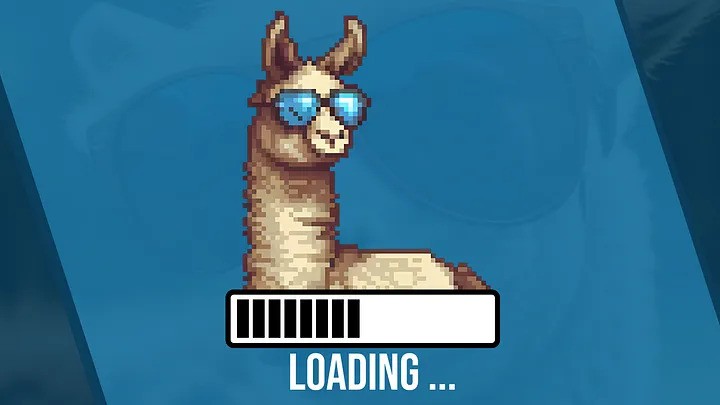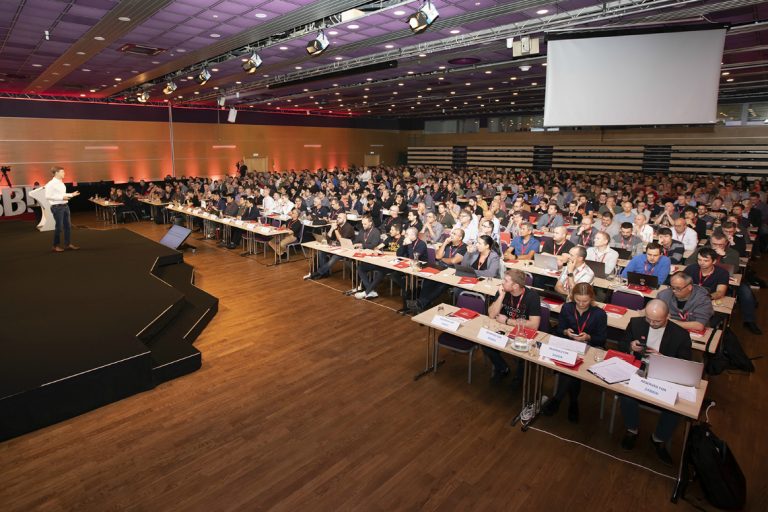Fool me if you can
The first Atari Pong slot machine was released in 1972. It is a two-player game based on table tennis, where each player controls a racket and must hit the ball to the other side. If the player misses, the opponent scores points. The first one to score 11 points is the winner. Kent Steven in his book”“The Ultimate History of Video Games” (The Entire History of Video Games) describes that the project was given to engineer Alan Alcorn, who had not previously worked on games or slot machines. Considering that the Atari founder had a little more than $500 in his pocket, and the chances of attracting experienced developers to work on an unknown project were minimal, Nolan Bushell presented this as fulfilling a contract for General Electric.

Alcorn exceeded expectations for this project, in addition to the scoring function and round timer, he added to the game the division of each racket into eight conditional segments, hitting which the ball changed its trajectory at different angles. Also, instead of designing the new arcade machine as a single device, he used a cheap black and white television, a wooden cabinet, and gas stove knobs. In addition, Alan redesigned the original circuit and replaced the components with cheaper analogues. Subsequently, the round timer was adjusted to change the speed of the ball, this change added dynamics to the game, but required more memory, due to which the game received a feature that the rackets could not reach the top edge of the screen. Alcorn, limited in time, had no time to correct this behavior and the bug became a feature that allowed an experienced player to deflect the ball so that it flew into the “dead zone”
But no matter how accurate and verified the gameplay is, the center of the game is a person, he tends to make mistakes. Make mistakes in assessments, in actions, in mouse movements or in the speed of pressing buttons. When a player fails to perform an action that he thinks was done correctly, he begins to criticize the game and the environment, get distracted and make even more mistakes, and eventually quit playing. Knowing these features, experienced designers always give the opportunity to make mistakes, but they do it so that you don’t notice it. If the game gives too much away, it's even more annoying than the over-difficulty.
But first, I’ll finish the story of the new Atari arcade machine: they decided to try out the prototype in a bar, whose owner was a friend of Bushnell’s, the game was called Pong and was set at Andy Capp's Tavern in Sunnyvale, a small city in California that had not yet experienced the rise of Silicon Valley at the time. The success of the new arcade machine was impressive; a few days after installing the prototype, Alcorn received a call from the bar manager who told him that the machine was not working and he needed to come and fix it as quickly as possible because it had become very popular.
“I went to fix the car not knowing what to expect,” Alcorn said. “I opened the coin drawer to give myself a free game, and lo and behold, money started pouring out. I grabbed fistfuls, put them in my pockets, gave the manager my business card and said, 'Next time this happens, call me right away.' home. I can always fix this problem.”
The slot machine stopped working due to the overflow of the coin slot, which was designed for only $50, after replacing it with a larger Pong, it began to bring in $200 a week, while most other slot machines collected no more than $50, and the average monthly salary was about $500.
Pong became a financial sensation and one of the company's most profitable ideas in terms of profit per unit of production; in addition, the game attracted people with its simplicity and the ability to communicate; there were always queues for it. The game provided new, untested experiences and impressions.
According to Alcorn's recollections, Gattis once told him:
“Al, this is very strange. When I opened the bar this morning, there were two or three people standing at the door, waiting to come in. They came in and played this machine. They didn't buy anything. I've never seen anything like this before.”
Reworked version for Pong, maintained the original functionality at a twofold reduction in cost. The cost of the device was a little less than $300, half of which went to the board, $100 for the TV and the rest for the case and assembly. The devices were sold for $900. In the first four months, the company made and sold more than 10,000 machines, producing almost 100 machines per day. In 1973, the company reported more than $1 million in net profit.

A little later, in 1974, the young and ambitious Steve Jobs got a job at Atari as a game developer. He had to come up with various original game ideas and refine the game designs of existing ones. However, they did not like him there for his arrogance and unkempt appearance. He was hired by Nolan Bushnell himself, who liked Steve. In the resolution for the reception, he noted him as a person who knows how to think outside the box and as a technical rebel.
Pong and similar arcade games still influence game design decisions almost half a century later. In the Bronze Age of video games, when arcade machines were the only way to play and technology was limited by the solutions of the time, designers were looking for high-quality, unique gameplay that would be memorable and fun. Until now, in most game studios, designers are given lectures on core gameplay, the history of the development of video games, and methods of keeping the player’s attention. And so far, good old advice is working, if you have played popular games of the last twenty years, then you probably know what I mean.
Let's look at what tricks developers resort to to make the game interesting and fun.
Aiming assist
Aiming assist is a game convention (mechanics) that helps the player aim more accurately at targets. It can be explicit and set in the settings, but it can also be hidden, “sticky”, and be attracted to nearby enemies to facilitate the aiming process. Typically, the player will aim at these enemies anyway, and the aim assist helps to do this more accurately and efficiently. Everyone has already accepted that the bullet can deviate from the real trajectory within 15 degrees.

Last hitpoint
The last health cell usually contains more than 10% of the hit points of the entire scale, to create the feeling of surviving with all your might. Add rhythmic music for distraction and visual effects, and at the last percent of health you finish off the fat boss. (Assassin's Creed and Doom). The game sings defams to the lucky player who “pulled out” a difficult battle.

Death shield
Enemies cannot kill a player with one shot, even if he has 1% health left. These tricks come from the Final Fantasy series of games and are associated with human psychology, when he considers finishing off creatures as his specialty, but not the game. (Final Fantasy, Prey, Dishonored)

Doubleit
In the game, any important information is duplicated by at least two systems: text and sound, sound and visual indication (for example, an arrow), visual indication and color change, etc. When the player begins to move in the right direction or performs appropriate actions, these hints automatically disappear, suggesting that the player has already received the necessary information and continues to act accordingly. (Witcher, GTA)

Save icon
Game developers have noticed that saving too often or too rarely irritates players, so the save icon may appear from time to time for no reason. Even if the save happens in a split second or is completely seamless, the game will still display a save icon as if the save process is ongoing. This is done so that players feel the importance of the moment, for example before a boss battle.

Hidden mechanics
Some games specifically claim mechanics that aren't actually in the game, but players can believe them and adapt their behavior accordingly. For example, in Shadow of Mordor, the developers claimed cooperation between individual orcs, the transmission of rumors about the player’s location with a delay, but in fact, each orc always knew where the player was now. This technique creates a sense of constant danger and heightens tension, which improves the atmosphere of the game and makes it more fun for players.

Bullet Hell
The closer enemies are to the player, the less accurate their attacks become, the slower they move and the less often they attempt to attack. This creates an effect that makes the player feel like Rambo or, at worst, Neo from The Matrix – more powerful and in control of the situation. This technique helps enhance the player's sense of mastery and superiority, which can enhance their gaming experience and enhance the atmosphere of the game.

Cover Back
In some games, such as Serious Sam and Uncharted, Shadow of Mordor, when enemies are behind the player, they may not attack or may start shooting less effectively. This is done to give the player the opportunity to react to a threat, run to cover, or change battle tactics. Such mechanics can also help increase the player's sense of control, which ultimately leads to more fun and dynamic gameplay.

Wrong bullet
Player and enemy bullets have different hitboxes when tested to hit. Also, the size of the bullet's hitbox can increase as the distance to the player increases, otherwise you would never be able to get a headshot from afar. (Serious Sam, Titanfall, Uncharted)

Scripted Headshot
In some games, such as “Max Payne”, “Gears of War” and “Uncharted”, if the player takes a long time to get headshots, the game mechanics can introduce some elements to make the combat more dynamic and challenging. For example, bullets may begin to be attracted to enemies or change their trajectory slightly to make life easier for the player and make the battle more interesting and effective. This technique also helps maintain tension in the game, making it more memorable for the player.

Shotgun bullet
In shooter games, shotgun pellets typically have more horizontal dispersion and less vertical dispersion. This makes them more effective when shooting at a group of enemies or when trying to hit multiple targets in one shot. These mechanics provide the player with the ability to effectively deal with multiple opponents up close and add dynamics to the gameplay, making it more exciting.

Stupid first
The Uncharted and Tomb Raider games often use this mechanic where the first few enemies deliberately miss the player. This creates a sense of good control and skill on the part of the character, which enhances the player's sense of superiority. This trick can also be used to create a smooth introduction to the game's encounter mechanics, as well as establish the pacing and mood of an area.

Viewcone enemy
The running speed of enemies becomes slower if the player is not looking at them in order to avoid moments where damage comes from out of nowhere or from blind spots. These mechanics enhance the gaming experience by adding an additional element of strategy and giving the player a deeper level of control over the situation.

Overpower
In games such as Bioshock and Days Gone, taking heavy damage can cause the player to become invulnerable for a few seconds. This creates a “barely alive” effect where the player manages to survive in an extremely dangerous situation due to temporary invulnerability. This mechanism adds tension and drama to the gameplay, making it more emotionally rich and exciting for the player.

Group health
In the games “The Division” and “Days Gone”, a mechanic is implemented where when one enemy in the group dies, part of his health is redistributed among the remaining enemies. This technique creates tense moments in fights as the remaining enemies become stronger and more resistant to damage. It also helps create the appearance of powerful enemies, as players are forced to focus their attention on specific opponents and develop strategies to take them down. These mechanics make combat more dynamic and challenging while maintaining interest and tension in the scene.

Magic bullets
Bullets that leave the player's field of vision begin to change their trajectory and hit glass, important objects and enemies around. This creates a dynamic environment, which is felt through attention to detail, when the player turns the camera and sees the consequences not of his hits, but how the bullet actually flew there is no longer so important. It is important when it is fun, dynamic and beautiful. (Half Life, Uncharted, Fallout)

Fake enemies
If there are more than two enemies in front of the player, then only a few or one begins to attack, and the rest cheer with shouts or shoot blanks creating the appearance of battle (Half-Life, Witcher 3, Red Faction: Guerilla, Uncharted)

Simple physics
At a considerable distance from the player, physics, various types of reaching and collisions can be disabled. Enemies may well move using simplified navinterventions to relieve the perf. (Wow, Max Payne)
Hard place
The game tracks how often a player dies and flies off to respawn. After a few deaths, the game can adapt by providing fewer or weaker enemies to make a section or level easier to complete. This technique is used to mitigate difficulty and prevent the player from becoming frustrated, especially if they are faced with a certain difficult situation or boss. However, it can also be used to maintain balance and provide the player with adequate challenge to keep the gameplay interesting and suspenseful. (RE3-4, XBlades, Far Cry, Crysis)

Lazy death
Enemies killed outside the player's field of view retain their last hit point (a unit of health) until they become visible to the player again and die beautifully before his eyes. This technique is used to create more spectacular and intense battles, where the player can see the last moments of the life of an enemy who was destroyed outside of his direct line of sight. (CoD, Warframe, Max Payne)

Better turn
The game keeps track of which direction you turn most often (Portal, Halo, Black Ops), this information is usually used to spawn more enemies in the direction the player turns most often. This technique helps maintain interest and create a sense of tension in the player, creating the feeling that they have to constantly be on guard and expect threat from all sides. This mechanic enhances the sense of atmosphere and makes the gameplay more exciting and dynamic.

Coyote time
If the player is on the very edge of the platform, he can still jump, although this is physically impossible (Mario, Far Cry 4). This technique is used to simplify controls and improve the gameplay, making it more dynamic and interesting. Such mechanics allow the player to move more freely around the game world and avoid possible frustrations associated with movement restrictions that might exist in reality.

Ghost player
The game does not show the NPC the player's current position, but rather with a delay to create “surprise” situations where enemies are unable to immediately notice the player and launch an attack, which adds an element of surprise and tension to the gameplay. (Mass effect, Halo, Metro:E)

Friendly grenade
Enemies always have one more grenade than the player. And the magazine is always one third full, even if it has used up all the ammunition (FEAR, Max Payne, Metro:E). This technique is used to create additional challenge and strategic decisions, where the player must actively manage their ammo and make decisions about when and how to use grenades. On the other hand, even if the player has exhausted all his ammunition, he will have some reserve in critical situations. Such mechanics help maintain tension and dynamism of the gameplay, without giving the player the feeling of a hopeless situation.

Corner cases
Enemies try to look in the same direction as the player to create opportune moments for silent kills (Hitman, Batman, Bioshock, Tomb Raider) For games where the player must hide or avoid collisions with enemies, this allows for the creation of movement and evasion strategies, including the use environment and tactics to attract the attention of enemies in the right direction.

Last bullet
Last round or grenade deals double damage (Bioshock, System Shock, Black Ops, Gears of War)

Fail is not final
Fights with heavy opponents end when the player's HP becomes low. (Bioshock 2, KoTOR) Game developers strive to create a balanced and exciting gameplay, where even the defeat of the player is not an obstacle to further progress. But it is often not recommended to use this pattern, because people discover it very quickly and begin to criticize the game for its simplicity. Also, the inability to send the player to a save helps maintain balance, preventing battles from being too easy or too difficult.

Skyline
If the player lowers the camera too quickly, it “clings” to the horizon for a short time so that you can react and not fly the camera to the floor.
Dynamic areas
The game collects statistics as the player passes certain areas and, depending on this, changes health in the next ones (Far Cry, Skyrim, Fallout)

Goddy chance
Chests have cool item counters that increase the chance of a cool item appearing there every time it doesn't drop, as well as a limit on the number of boxes without good items. This protects players from total bad luck. (War Thunder, Heartstone, Mass Effect, Skyrim)

Moba arena
NPCs damage each other less if the player is not looking at them (Shadow of Mordor, Red Faction, Horizon, AC: Odyssey). Limiting NPC damage to each other in this case helps create the impression of huge, massive battles. If each NPC were to actively attack each other regardless of the player's attention, it could reduce the sense of scale of combat and lead to chaos that may be difficult to manage or understand for the player.

Explorer
If the player purposefully moves in one direction, monsters can move out of his way and not interfere; the game believes that he is following a quest and does not want fights. However, if the player moves in zigzags or circles, monsters may begin to hunt him, as such movement usually occurs when he is searching for resources. Such mechanics help create a sense of realistic enemy behavior and add depth to the gameplay, taking into account the player's tactical decisions and reactions to the world around them. (Witcher, Zelda, Fable)

Ragdoll magnet
If an NPC dies near a railing, ledge or edge, he will likely fall towards the railing. (Hitman, Dark Messia, Half Life, Doom) The visual aspect of a game plays an important role in creating atmosphere and emotional impact on the player. Beautifully designed death scenes can enhance the experience of the game, as well as show the peculiarities of using the physics engine.

Weapon load
We try to make weapon reloading animations as beautiful and long as possible. Long and beautiful reload animations create a deeper sense of immersion in the game world. When the player sees detailed animations, he is better immersed in the gameplay, feels part of the game world, and is easier to forget about external factors such as loading the environment. During reloading, the player focuses on the reloading process itself, and not on what is happening around him.
Fake hitboxes
The player's combat hitbox is made smaller by enemies; it is additionally reduced at the start of the battle to avoid accidental hits and ricochets.

Blind areas
When the player is in stealth, cover hitboxes are slightly larger (Hitman, Metro:E, Thief, Horizon, Zelda) This helps improve the player's gaming experience in stealth mode. If the player and head hitbox remained the same, this could lead to situations where the player would be spotted by guards even if their head was behind cover, which would reduce the enjoyment of the game when they think they are hiding.

Magicwall
When the battle begins, additional geometry is placed around the player (transparent walls), which NPCs cannot cross; firstly, there is a possibility that their animations will get into the textures, which is ugly. The second point is that NPC interaction with the player can push them out of the combat zone and lose momentum. If the player himself does not decide to run away, then the NPCs will continue to circle around him.

Wrong timers
Timers in games are made with extended seconds to increase the tension of the moment. For example, 3 minutes of game time with a coefficient of 1.2x will give almost 230 seconds of real time. But it will still be three minutes for the player.

Shotgun pellets
The first pellet in a shot always flies straight, regardless of the spread of the weapon, this is done to mark hits from shotguns so that the player always sees the reaction to the shot (Half-Life 2, Team Fortress, Far Cry)

Explosions
The shrapnel scattering system takes into account the player's position to direct some of them in his direction, creating more dynamic scenes with explosions. (Crysis, Far Cry, Uncharted, Control)

Play games…
In good games, designers care about a large number of game mechanics, taking into account various aspects of human behavior, down to the placement of user interface elements and color compatibility. This is a one-person theater only, so don't be fooled!





